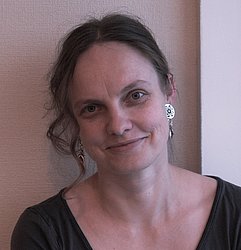Professional bachelor's degree programme “Art”
Programme level: Professional Bachelor's Degree Programme
Language of instruction: Latvian
Study form and duration: full-time - 8 semesters, part-time - 9 Semesters
Credits: 240 ECTS
Obtainable degree or qualification: Professional Bachelor's Degree in Art; qualification: Graphic designer or Interior Designer
Number of study places for admission in 2025/2026: full-time studies - state-funded study places 4, study places for tuition fee 90; part time studies - places for tuition fee 50
Tuition fee per year (ac. year 2025/2026): Full-time studies - 2600 EUR for EU/EEA/Swiss citizens, EU Long-term resident permit holders and their family members. 4700 EUR for citizens of other countries. Part-time studies - 2300 EUR, for citizens of other countries - 4200 EUR.
Study location: Riga
Programme director

docent Austra Celmiņa-Ķeirāne
The study programme includes the following courses: drawing, painting, composition, computer graphics, arts history, foreign languages, philosophy, business management, etc.
In the Graphics Designer sub-program: design history, photography, basics of operator’s work, polygraphic design, animation, branding.
In the Interior Designer sub-programme: history of the interior, foundations of architecture, interior design, spatial design, interior light, materials.
Upon completion of the programme, the students will be able to:
- display the basic and specialised knowledge required for the design of a graphic design product or interior design;
- show awareness of the most important concepts and relationships of design, focus on the design process structure, know the specific features of design;
- understand the criteria for design values in a cultural and historical, political, economic, technical, aesthetic, ethnic and social context;
- demonstrate awareness of the realities of the design sector and its role in the context of the national economy;
- formulate and analytically describe information, design and related issues and possible solutions;
- assess the factors and actors affecting design development;
- carry out professional and artistically innovative activities in the field of design, using theoretical knowledge and skills learned;
- formulate problems and supervise work tasks, develop a design offer independently and creatively, align it with the contracting authority, employers, responsible services, technical performers, manufacturers;
- focus on traditional and digital visualization technologies and the supply of materials;
- choose the most appropriate artistic and technical techniques to implement the design;
- plan the execution of the design project, performing author’s supervision, monitoring the quality and conformity of work’s compliance of the design product with the concept, aesthetic and technical quality, environmental and safety requirements;
- systematise and archive information accumulated in the design process;
- carry out work individually or in a team, take decisions according to competence and take responsibility, address conflict situations;
- choose a presentation strategy, present the project to different audiences, debate it;
- direct own learning;
- demonstrate a scientific approach to tackling problems in the area of interior or graphic design;
- comply with ethical rules;
- be aware of the need for lifelong learning.
After the studies students may be employed by printing companies, publishing houses, advertising and public relations companies, design salons, architect offices, etc. If you want to, you can be self-employed and engage in different design projects, or build your own business.
You can find out about the admission requirements for the study program by switching to the Latvian version of the website.
katrina_liva.karasa@lu.lv
67034842
Imantas 7. līnija 1, 417

 CONFERENCE
CONFERENCE